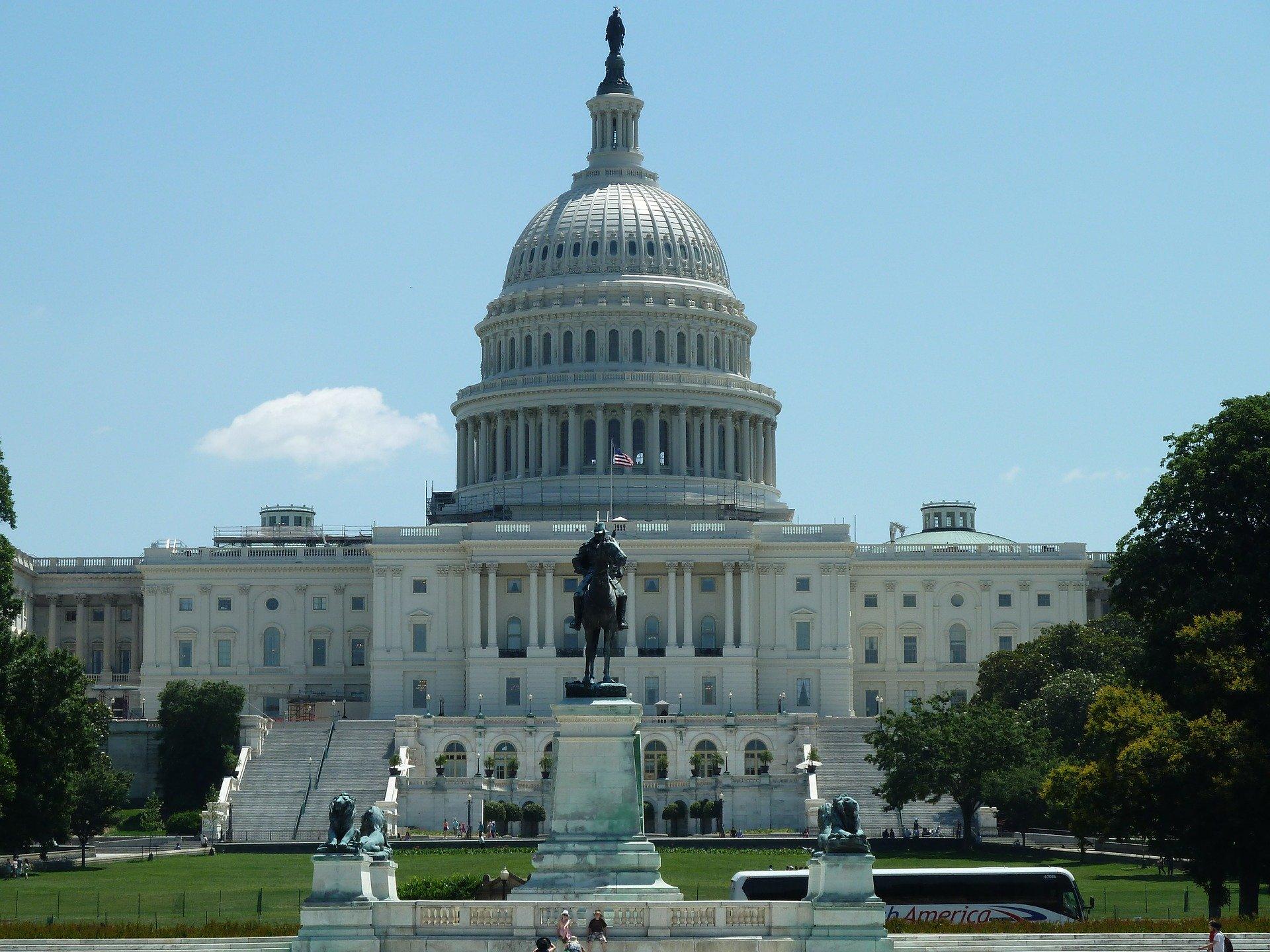
The topic on nearly everyone’s mind these days is the coronavirus. As financial planners we are not qualified to discuss the medical implications of the virus, we leave that to the professionals. For details about protecting yourself and loved ones, and what to do to prepare, we encourage you to reference the links at the end of this article.
We do specialize in discussing the financial considerations during this turbulent time . Last week the Federal government passed a massive $2 trillion (yes with a T) stimulus bill in response to COVID-19 and its impact on individuals and business es alike. Many financial stimulus measures were taken in the bill. Here are some of the key details that you should know about.
Stimulus Payments:
One of the most talked about aspects of the CARES Act in the media are direct payments to individuals. Do you qualify? How much should you expect to receive? When will these payments arrive? Here’s what you should know.
Who will receive a payment?
Wh ether you qualif y depends on your last reported income (specifically AGI) on your tax return. If you haven’t filed yet they will use your 2018 tax return. Otherwise, the IRS will u s e your 2019 tax return . However, there is no clear information on an exact cutoff date for those who have recently filed or have yet to. To qualify for the entire payment your AGI would need to be $75,000 or less for individual filers , $150,000 for joint, or $112,500 for head of household.
If your income was above these limits the amount of your payment is reduced by $5 for every $100 of income above the threshold . This reduction continues to apply until there is no amount remaining. While the payments are made now, they are intended to be based on your 2020 income. Therefore, if your income was too high to qualify based on your most recent tax return but your income qualifies in 2020, you will receive a credit to true-up for the amount you should have received when you file your return.
What is the payment amount?
The payments are $1,200 for those filing singl e and $2,400 if joint. There is an additional $500 for every child under the age of 17. An important distinction is that the child cannot be age 17, they need to be younger than 17 to qualify for the additional $500.
As an example, if you’re filing jointly and have a son age 18 and a daughter age 15, the rebate amount would be $2,900 ($2,400 + $500 + $0).
When should you expect a payment?
The treasury department is instructed to issue payments as soon as possible. According to some sources, they could begin being sent as soon as April 9th . However, many should expect the payments to be received later than that because the IRS will be sending the payments in waves. They will send the money to the most recent direct deposit ba nk from your tax return, to the most recent address on file, or where you receive Social Security payments .
Is the money taxable?
The payment received is not taxable to you. Even if you receive a payment and your reported income is higher than the limits in 2020 you do not need to pay any back. For more info and updates on these payments, you can follow the IRS website devoted to this topic .
Enhanced Unemployment Benefits
One of the major components of the bill are expanded unemployment benefits for workers impacted by the virus. This includes Pandemic Unemployment Assistance for self-employed individuals who generally don’t qualify for unemployment benefits. If you are self-employed, and are out of work, you are eligible for benefits through the Federal government and should apply.
Other changes include benefits starting during your first week of unemployment. Generally there is a week delay before benefits begin. Many unemployment benefits are also increased by $600 per week for up to 4 months through the CARES Act. The y are also extended for another 13 weeks if you are unemployed after your state’s benefits run out.
Applying for unemployment benefits varies by state. New Hampshire residents can go to the New Hampshire Employment Security website for more information on claiming benefits . Massachusetts residents can apply by going to the MA Department of Unemployment Assistance page . If you work in a state other than NH or MA, you would simply go to your state’s unemployment assistance site and fill out the appropriate applications.
Retirement account distributions
Based on the recent unemployment numbers, many individuals will likely need additional money to pay their bills while out of work. While the stimulus checks will help, they may not arrive for some time. Financial advisors encourage their clients to have an emergency fund specifically for times like these. However, if you do not have an emergency fund, or you are unable to work for longer than expected, there may be a need to get money from other places. In response to this, the CARES Act also provides for special distributions from retirement accounts.
Coronavirus Related Distributions
These are special distributions allowed from retirement accounts (IRA, 401k, 403b, etc.) up to $100,000 in 2020. There are a few major benefits if you take one of these distributions. First, the 10% early withdrawal penalty is waived if you are under the age 59.5. Normal income taxes will still apply, but the penalty will not.
Second, the amount withdrawn can be paid back to the retirement account over 3 years. It does not need to be a lump sum but can be numerous smaller payments over that time. If it is not repaid in 2020, but in future years, you will need to amend your 2020 return to remove the income that was reported originally.
Third, the income taken out can be spread out over a 3 year period and does not all need to be reported in 2020. For instance, if you took $30,000 out of your retirement account as a coronavirus distribution in 2020 you could report the entire $30k in 2020, or $10k in 2020, $10k in 2021, and $10k in 2022.
As discussed in other posts, we strongly discourage selling stocks when the market is down. Selling these investments in order to take this special distribution can severely hurt your long-term financial plan. Before taking a distribution, we highly encourage you to speak with a financial advisor or tax professional to discuss the tax impact of taking a distribution and whether it is appropriate for you.
What qualifies for this distribution?
Only certain reasons qualify for this special distribution and the ability to repay it over a 3-year period. Thankfully, the qualifications are quite broad so if needed, many should be eligible for this exception.
-
Been diagnosed with COVID-19
-
Have a spouse or dependent diagnosed with COVID-19
-
Experience adverse financial consequences (quarantined, laid off, etc.)
-
Unable to work because of lack of childcare because of the virus
-
An owned business is closed or hours reduced because of COVID-19
-
Other (decided by the IRS)
Required Distributions Waived in 2020
The CAREs Act also allows RMDs to be skipped this year. Of course, if you need money from your retirement accounts you can still take it, but if you’re of required distribution age it is not mand atory . This is true for both personally owned retirement accounts, or any inherited retirement accounts from others.
What if you’ve already taken your RMD?
If you’ve already taken your RMD there are a couple options. If the distribution took place less than 60 days ago you are allowed to put the funds back, assuming you haven’t done in this in anytime in the past year. If the distribution was more than 60 days ago, and you meet one or more of the qualifications for a coronavirus distribution, you can put the RMD back as part of a coronavirus distribution sometime over the next three years.
However, inherited retirement accounts do not allow money to be repaid back under any circumstances.
Whether you should still take a distribution, or retu rn one already taken, highly depends on your tax situation. Our financial planners at Milestone are actively reviewing this for our clients who have already taken their RMDs. In lieu of taking an RMD, it may make more sense to do a Roth conversion instead . For questions on whether this is something you should do, we suggest reaching out to a qualified financial advisor.
Some Student Loan Relief
For those who have student loans, there is some assistance coming from the bill, but you must take action in order to participate. If desired, those with student loans can suspend payments through September 30, 2020. During this time , no interest will accrue but you are not allowed to make any payments, even if you wanted to, on your loan. In order to defer these payments , you need to contact your student loan borrower directly.
Small Business Assistance
A significant portion of the CARES Act is devoted to helping small businesses financially through this pandemic. Many have seen business decrease significantly , if not stop entirely , during these times . If you own a small business, here are some potential benefits that may apply to you.
Paycheck Protection Program
This is a substantial loan program where a portion of the loan will be forgiv en if used for certain expenses. There is limited availability of these loans – the government only allocated $349 billion to the program. While the official due date to apply for the loan is June 30, 2020 , we encourage you to apply as soon as possible . In addition, in order to be approved for a loan there is a significant amount of paperwork to be gathered and submitted, so it is urgent that you start looking at this now, if you want to apply. The loans are guaranteed by the Small Business Administration and are provided by approved SBA lenders. To qualify you generally must have fewer than 500 employees and have economic uncertainty based on your current circumstances.
The loan can be used for the following expenses:
-
Rent
-
Mortgage interest
-
Utilities (gas, internet, phone, etc.)
-
Payroll costs
-
Group health insurance
However, the greatest benefit is that a portion of the loan will be forgiven , tax-free. Th e forgivable portion is money spent during the first 8 weeks after the loan is made for the following expenses:
-
Payroll costs for individuals with compensation less than $100,000
-
Rent in force before 2/15/20
-
Utilities in force before 2/15/20
-
Group health insurance costs
Money spent after the 8 weeks, or on other expenses , do not qualify for forgiveness. Part of the reason for these favorable terms is because congress wanted to help small businesses, but also to keep employees employed . So, another condition for forgiveness is that the business must maintain the same number of employees in that 8-week time frame from either 2/15/19 – 6/30/19 or 1/1/20 – 2/29/20. If the same number of employees (or more) aren’t employed Share:



